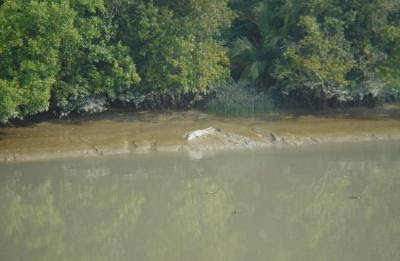Sundarbans is the largest mangrove forest in the world
Sundarbans is the Sundarbans is situated Bangladesh and India both country.The Sundarbans features a complex network of tidal waterways, mudflats and small islands of salt-tolerant mangrove forests.Located about 320 km. south-west of Dhaka and spread over an area of about 60000 sq, km of deltaic swamps along the coastal belt of Khulna.Sundarbans is accessed from Kolkata ( Calcutta) by traveling either towards the South East or the South West.

The South West route takes one through Diamond Harbour to Kakdwip and Namkhana. You can take a boat from these places or from Gangadharpur and visit Lothian Island and surrounding areas.The South Eastern route is more popular. You drive 86 kms through wetlands and agricultural land to reach Sonakhali. You can take a 3 hour boat ride from Sonakhali jetty to Sajnekhali Tourist Lodge or cross over to Basanti. From Basanti you can take an auto-rickshaw ride to Gadkhali (11kms). At Gadkhali take the ferry to cross the Bidya river to arrive at Gosaba. A Cycle Rickshaw ride will take you to Pakhiralaya in about half hour. Sajnekhali is across the water from Pakhiralaya. A UNESCO World Heritage Site (awarded in ’97) , Sundarban is a vast area covering 4262 square kms in India alone, with a larger portion in Bangladesh. The total area of the Indian part of the Sundarban forest, lying within the latitude between 21°13’-22°40’ North and longitude 88°05’-89°06’ East, is about 4,262 sq km, of which 2,125 sq km is occupied by mangrove forest across 56 islands and the balance is under water.

The Sundarbans is the world's biggest mangrove forest - the home of the Royal Bengal tiger. The Royal Bengal tiger being the most famous, but also including many birds, spotted deer,crocodiles and snakes.the Sundarbon Indian restaurant in Monk Street, Abergavenny, is an exotic treasure just waiting to be discovered. Specialising in aromatic Bengali dishes, our chefs are masters in the art of preparing flavoursome food for diners who enjoy an authentic Indian experience.These dense mangrove forests are criss-crossed by a network of rivers and creeks.
November to March is best time to visit this forest.





